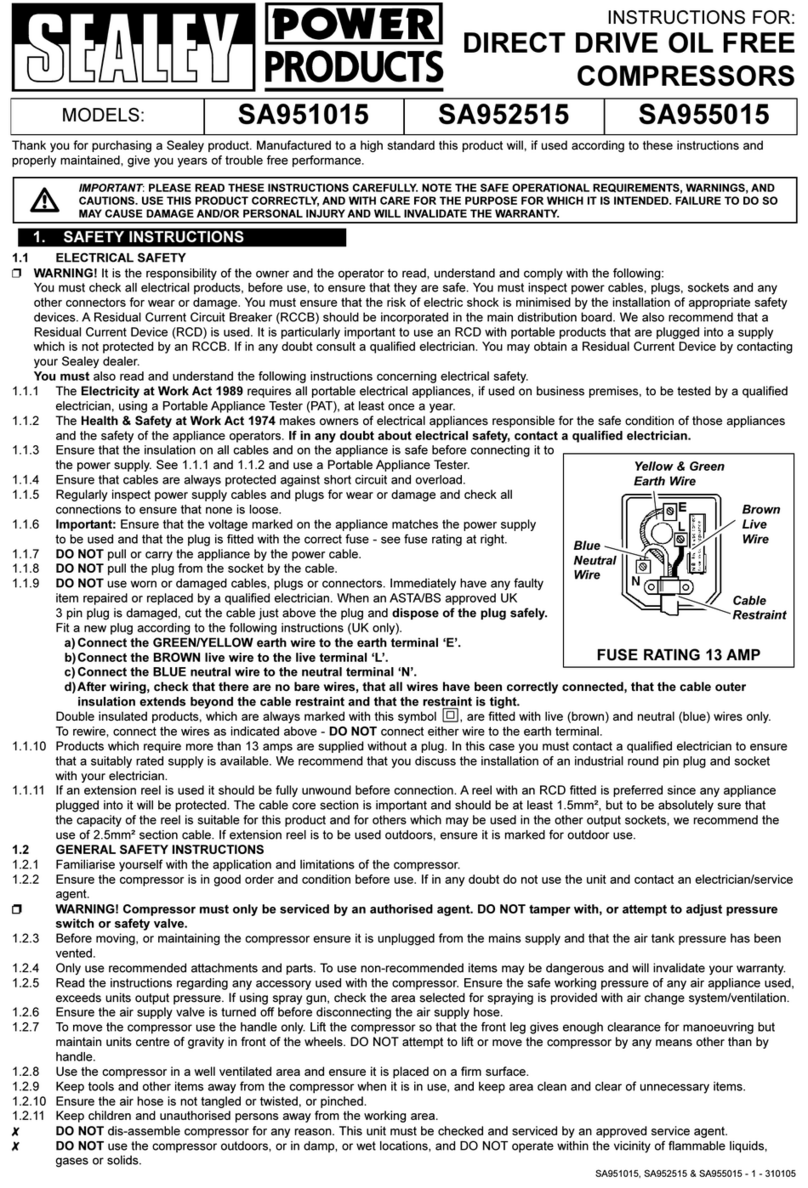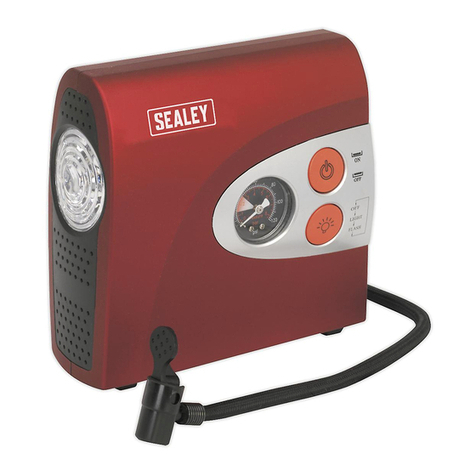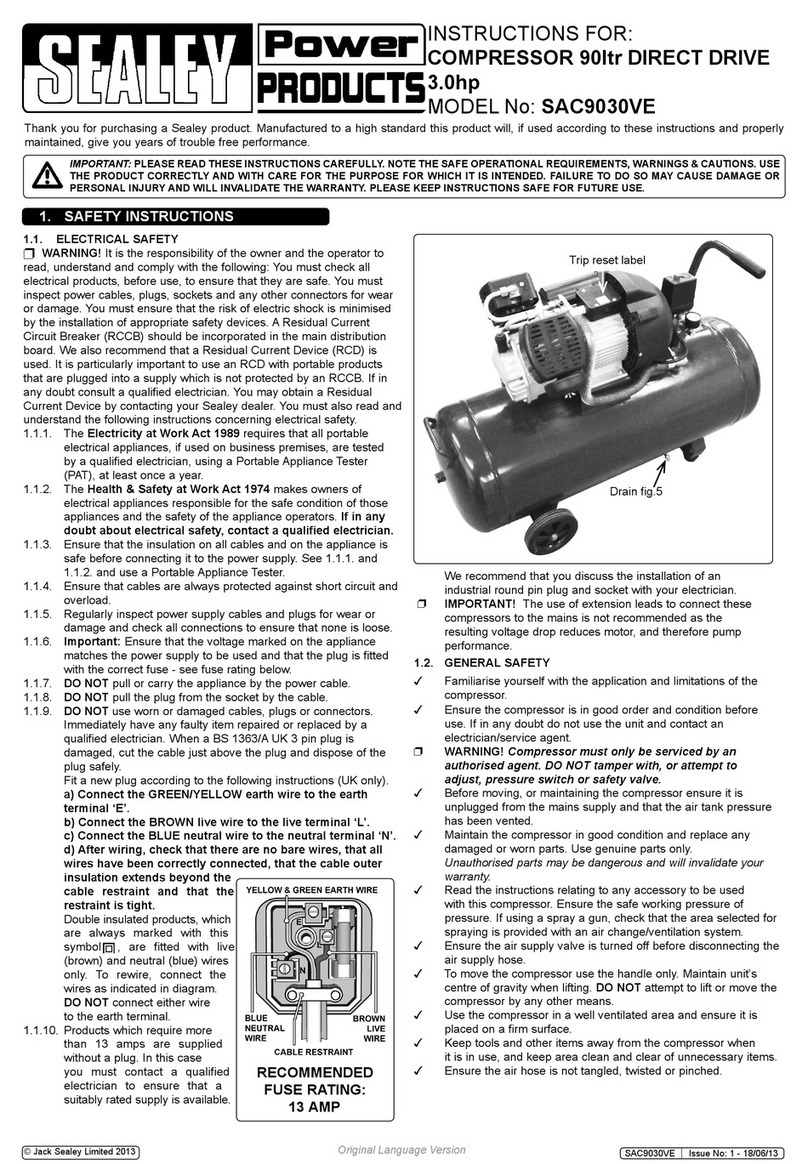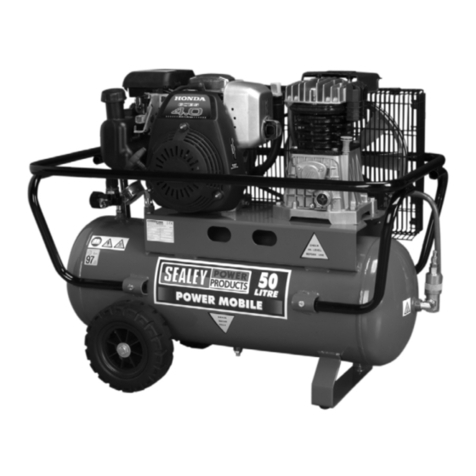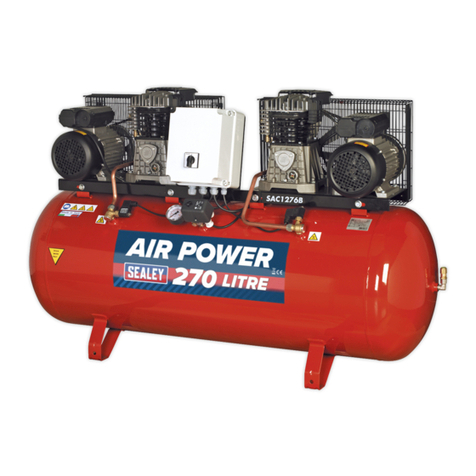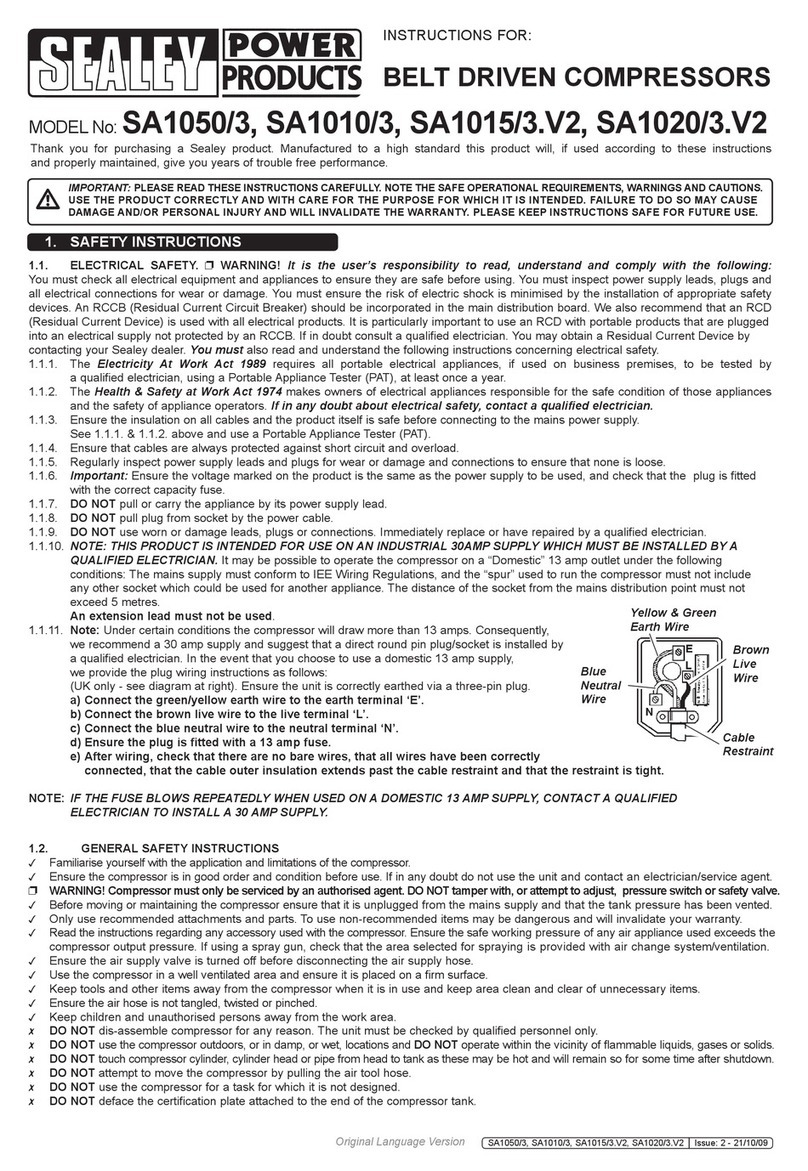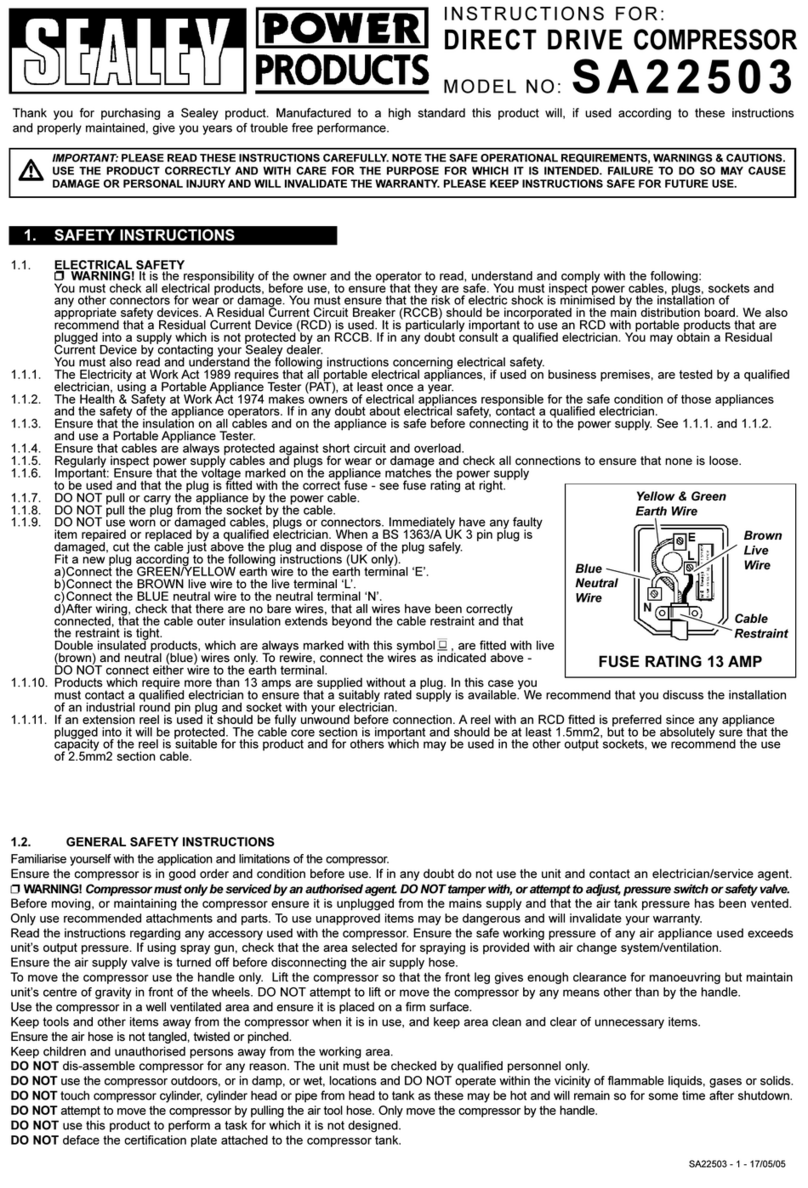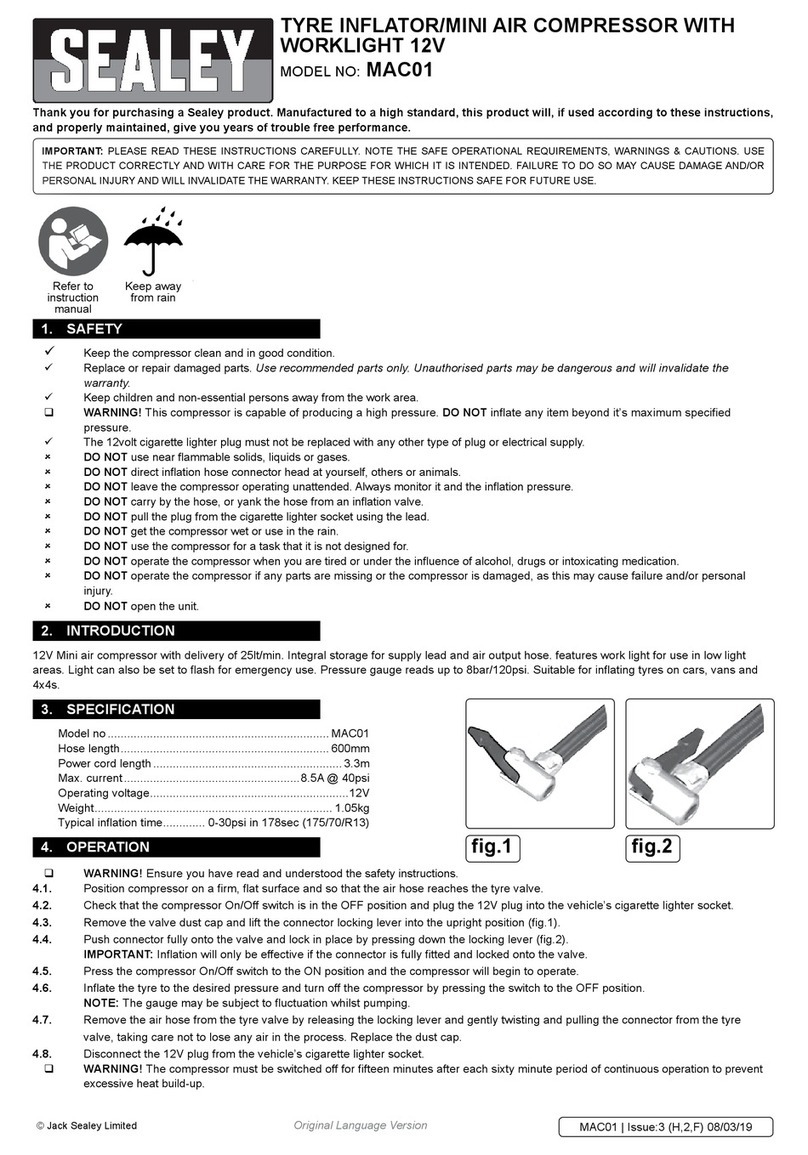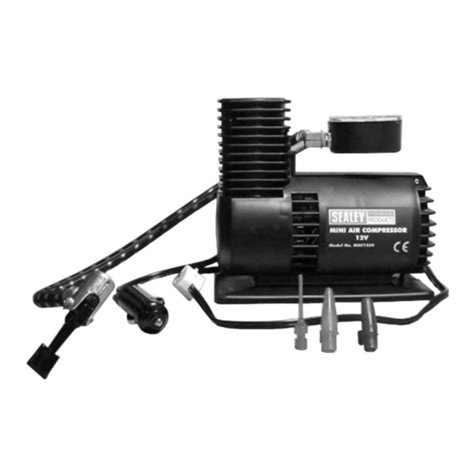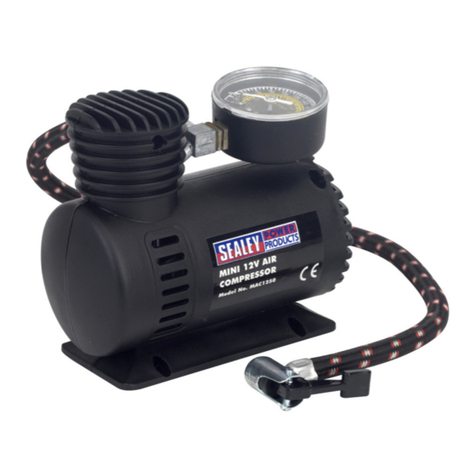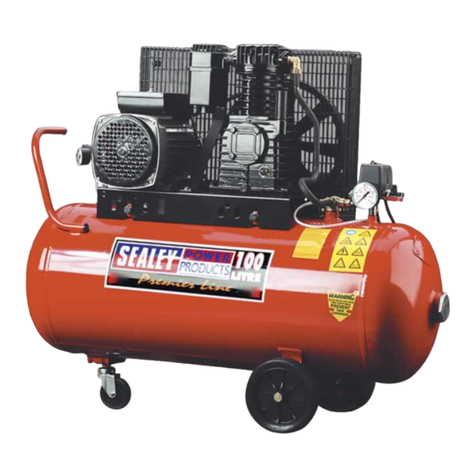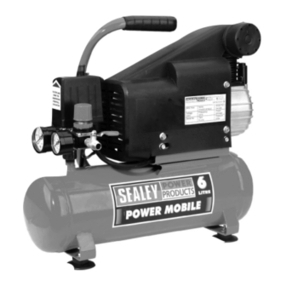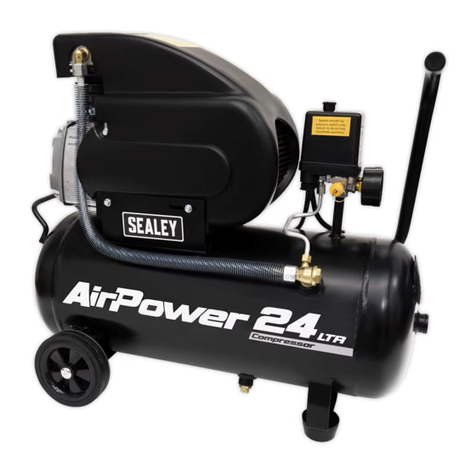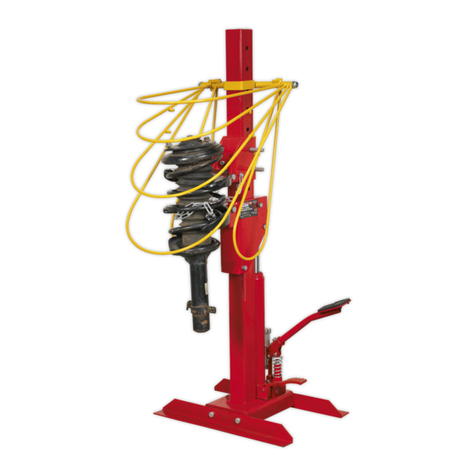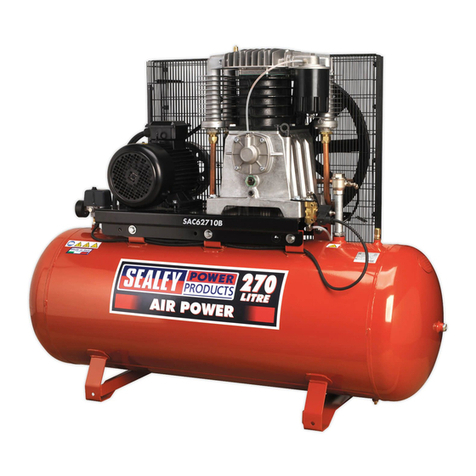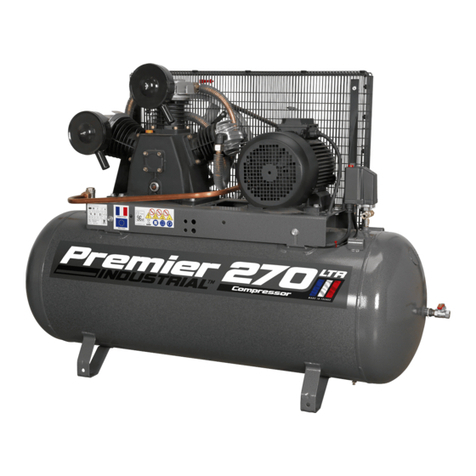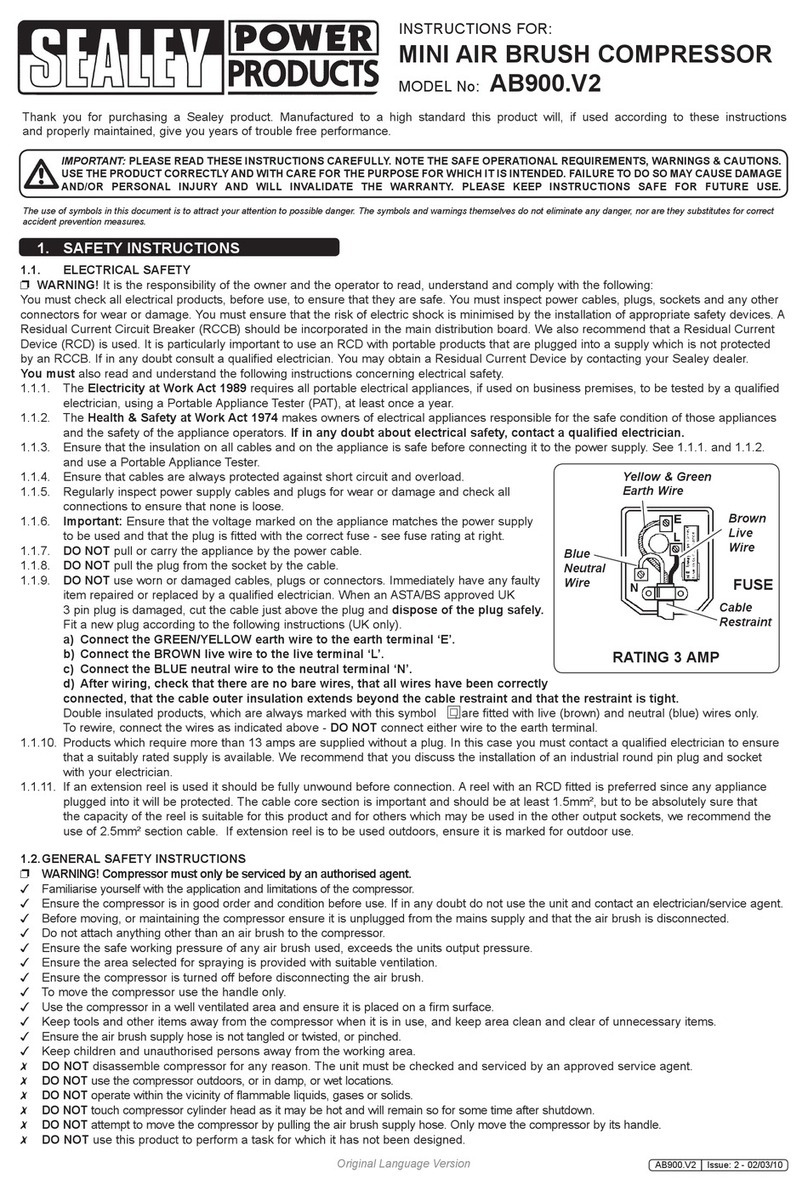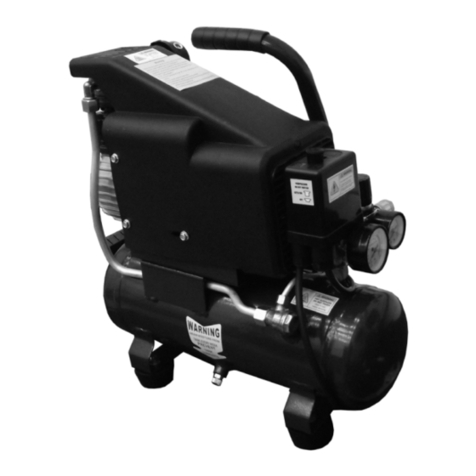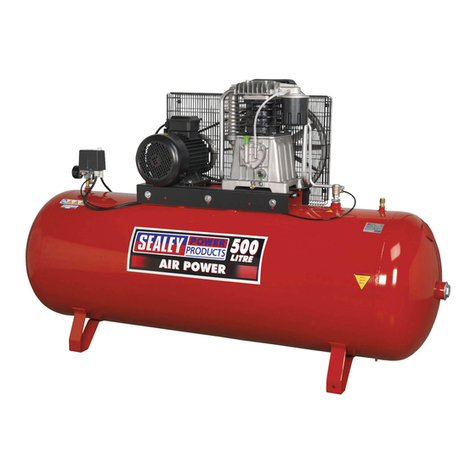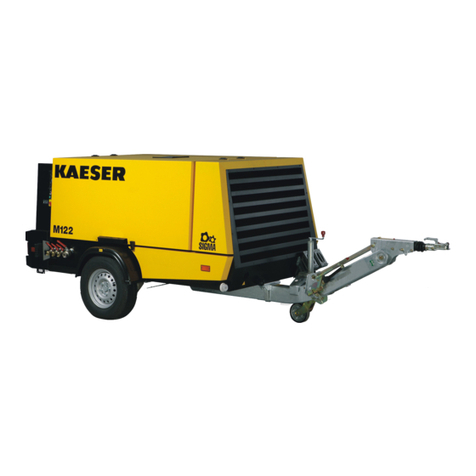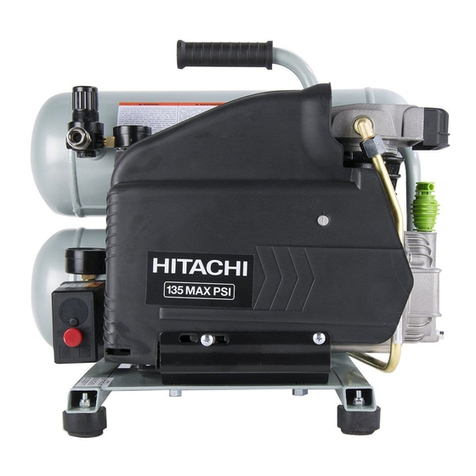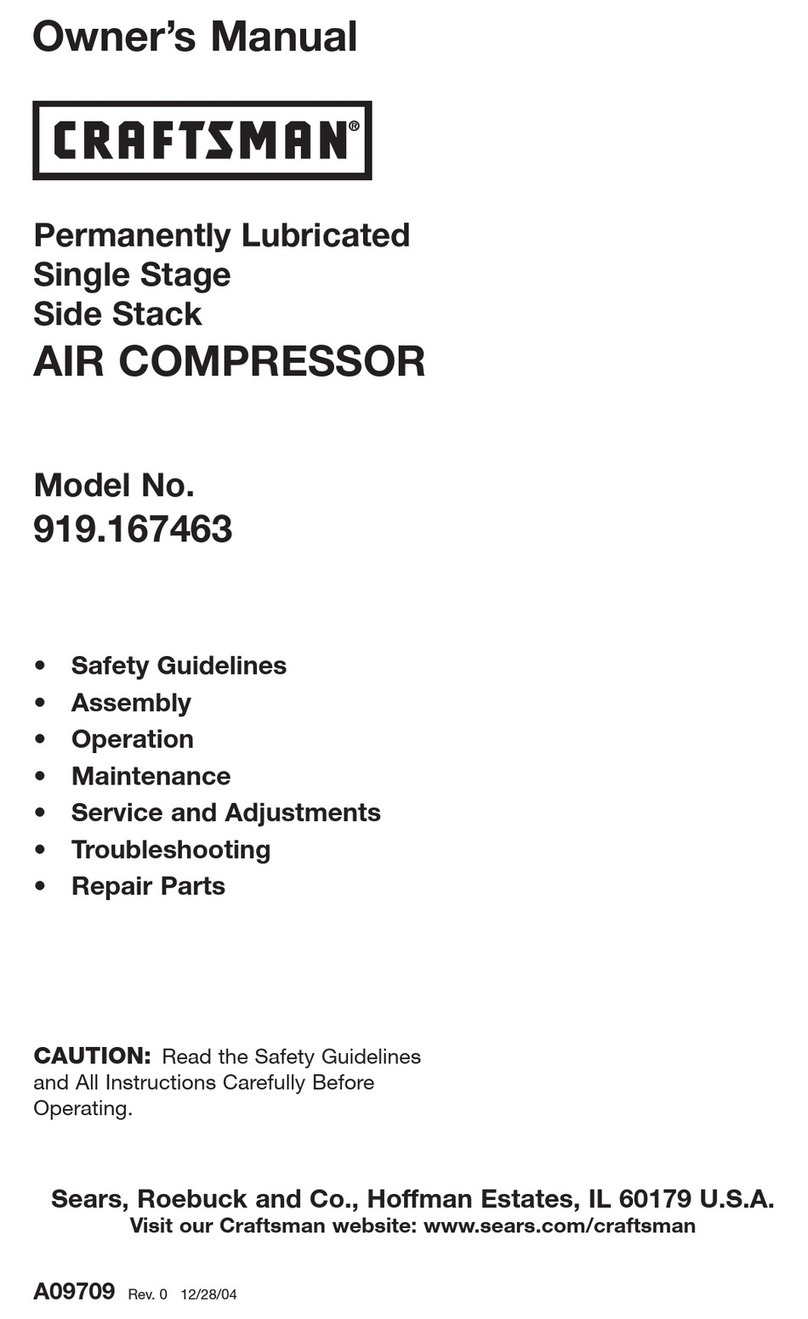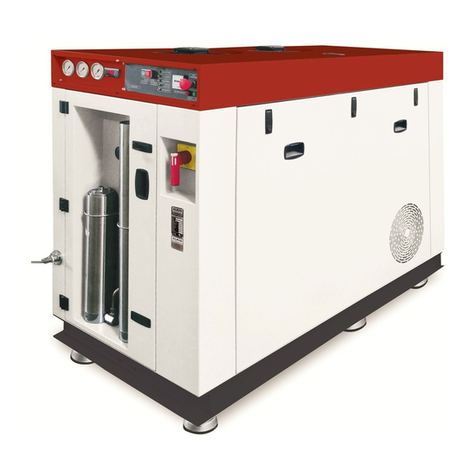
4.1. Remove compressor from packaging and inspect for any shortages or damage. If anything is found to be missing or damaged contact
your supplier.
4.2. Save the packing material for future transportation of the compressor. We recommend that you store the packing in a safe location, at
least for the period of the guarantee. Then, if necessary, it will be easier to send the compressor to the service centre.
4.3. The compressor should be operated on a flat surface, or one that does not exceed 10° either transversely or longitudinally (fig.1) and
should be in a position that allows good air circulation around the unit (at least a 100cm gap).
4.4. Check oil level, consulting the reference marks on the stick (fig.2 + fig.2a) or the oil level inspection window depending on model
Use only synthetic oil (see maintenance section for oil specification).
4.5. Confirm the mains voltage corresponds with the voltage shown on compressor data plate.
Have a qualified electrician wire in accordance with Section 1.1. and check that the motor operates in the correct direction.
SAC62710B.V2 has a control box which requires mounting to a suitable wall and connecting to the mains by a qualified electrician.
4.6. When fully installed, start the compressor and ensure that everything is in good working order before operational use. Check the
direction of rotation (see arrow on motor) to confirm correct wiring of 3-phase plug. Re-check oil levels.
Heavy-duty 3-phase compressors suitable for the professional workshop. Two stage pump system coupled with a 3ph motor maximises
performance to keep running costs low compared to single stage single phase models. Pumps feature heavy-duty full cast cylinders, capped
by alloy heads for improved heat dissipation and long life. Heavy-duty drive guards protect belt and flywheel that is designed to force air over
the pump to aid cooling. Model No’s SACV42755B and SACV52775B have 270ltr vertical space saving tanks without compromising on
volume.
1.2. GENERAL SAFETY INSTRUCTIONS
Familiarise yourself with the application and limitations of the compressor.
Ensure that the compressor is in good order and condition before use. If in any doubt DO NOT use the unit and contact an electrician/
service agent.
IMPORTANT! The compressor must be installed and commissioned by qualified personnel.
WARNING! Compressor must only be serviced by an authorised agent. DO NOT tamper with, or attempt to adjust, pressure
switch or safety valve.
Before moving or maintaining the compressor ensure it is unplugged from the mains supply and that the air tank pressure has been
vented.
Only use recommended attachments and parts. To use non-recommended items may be dangerous and will invalidate your warranty.
Read the instructions regarding any accessory used with the compressor. Ensure the safe working pressure of any air appliance used
exceeds the compressor regulator. If using a spray gun, check the area selected for spraying is provided with an air change system or
ventilation.
Ensure the air supply valve is turned off before disconnecting the air supply hose.
Use the compressor in a well ventilated area and ensure it is placed on a firm surface away from any heat sources.
Keep tools and other items away from the compressor when it is in use and keep area clean and clear of unnecessary items.
Ensure the air hose is not tangled, twisted or pinched.
Keep children and unauthorised persons away from the working area.
DO NOT dis-assemble compressor for any reason. The unit must be checked by qualified personnel only.
DO NOT use the compressor outdoors, or in damp, or wet, locations and DO NOT operate within the vicinity of flammable liquids,
gases or solids.
DO NOT touch compressor cylinder, cylinder head or pipe from head to tank as these may be hot and will remain so for some time
after shutdown.
DO NOT attempt to move the compressor by pulling the air tool hose.
DO NOT use this product to perform a task for which it has not been designed.
DO NOT operate the compressor with the belt guard removed.
DO NOT deface the certification plate attached to the end of the compressor tank.
DO NOT cover compressor or restrict air flow around the machine whilst operating.
DANGER! DO NOT direct the output jet of air towards people or animals.
DO NOT operate the compressor without an inlet air filter.
DO NOT allow anyone to operate the compressor unless they have received full instructions and adequate
training.
WARNING! The air tank is a pressure vessel and the following safety measures apply:
DO NOT tamper with the safety valve and DO NOT modify or alter the tank in any way, DO NOT
strap anything to the tank.
DO NOT subject the tank to impact, vibration or to heat and DO NOT allow contact with abrasives or
corrosives.
DO drain condensation from tank daily, inspect inside walls for corrosion every three months and
have a detailed tank inspection carried out annually. Tank shell must not fall below the certified
thickness at any point.
WARNING! If an electrical fuse blows, ensure that it is replaced with one of identical type and
rating.
When not in use, store the compressor carefully in a safe, dry, childproof location.
When the compressor is not in use, it should be switched off, isolated from the mains supply and the air
drained from the tank.
fig. 1
Motor
Out-
put
hp
Voltage/
Phase
Input
Current
Amp
Speed
Rpm
Air
Displacement
Cfm/Lm
Max Free Air
Delivery cfm/
Lm
Max.
Pressure
psi/bar
Receiver
Capacity
Ltr
Dimension
(WxDxH)
mm
Weight
kg
Noise
dB.A
Noise
LwA
SAC42055B.V2 5.5 415/3 32 1490 20.7/586 15.1/419 145/10 200 1440x440x965 135 77 97
SAC52775B.V2 7.5 415/3 32 1280 29.7/841 21.5/609 145/10 270 1550x510x1070 143 77 97
SAC62710B.V2 10 415/3 32 1080 38.4/1088 27.3/775 145/10 270 1550x540x1200 224 77 97
2. INTRODUCTION
3. SPECIFICATION
4. PREPARATION
SAC42055B.V2, SAC52775B.V2, SAC62710B.V2 Issue: 1 - 16/12/16
Original Language Version
© Jack Sealey Limited
